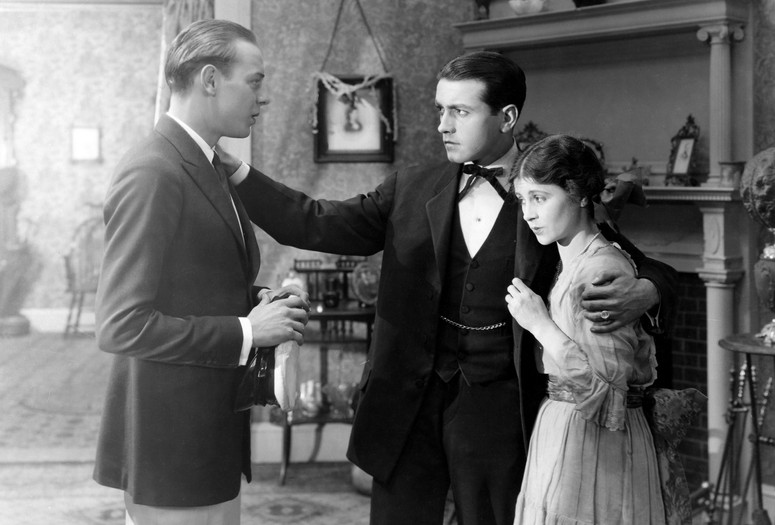
The Jack-Knife Man. 1920. USA. Directed by King Vidor. Screenplay by Ellis Parker Butler, William Parker. With F. A. Turner, Harry Todd, Bobby Kelso, Lillian Leighton. Silent. 35mm. 63 min.
The Seventh Day. 1922. USA. Directed by Henry King. Screenplay by Porter Emerson Browne, Edmund Goulding. With Richard Barthelmess, Anne Cornwall, George Stewart, Louise Huff. Silent. 35mm. 57 min.
'In addition to championing international filmmakers and the “New Hollywood,” Adrienne Mancia celebrated American directors of a bygone era who had worked within the Hollywood studio system. Both King Vidor and Henry King—the subjects of MoMA retrospectives in 1972 and 1979, respectively—began making films in the 1910s. These retrospectives helped to shed light on the significance of many of these long-neglected movies at a time when the era of film preservation was beginning to take hold.
King Vidor’s The Jack-Knife Man (1920) is centered on a dying mother who, not wanting her son to go to an orphanage, leaves him with a poor riverboat man, who carves wooden toys with a jack-knife for the young boy. Travails and plot twists eventually lead to a happy ending. Vidor frequently addressed social issues in his films, and The Jack-Knife Man presents both a sympathetic portrait of impoverished people living on shantyboats along the Mississippi River in the 1920s and a critique of child rescue societies. The film advocates for self-help and redemption, consistent with Vidor’s “Creed and Pledge,” published in Variety, which was a manifesto of his social and artistic ideals.
Director Henry King became known as a proficient director whose work cut across many genres. He also enhanced the careers of his leading men, including Ronald Colman, Gary Cooper, and Richard Barthelmess, the star of this film. According to noted film historian Peter von Bagh, King’s “early routine works were dominated by a touchingly naïve sense of American happiness: illusions but also wishes fulfilled.” The Seventh Day (1922) highlights class distinctions between high society, in the guise of young, wealthy New Yorkers on a yachting vacation in New England, and the local youth of a Maine fishing village. The class divides are bridged at the end of the film, when love overcomes all.' (Jon Gartenberg)